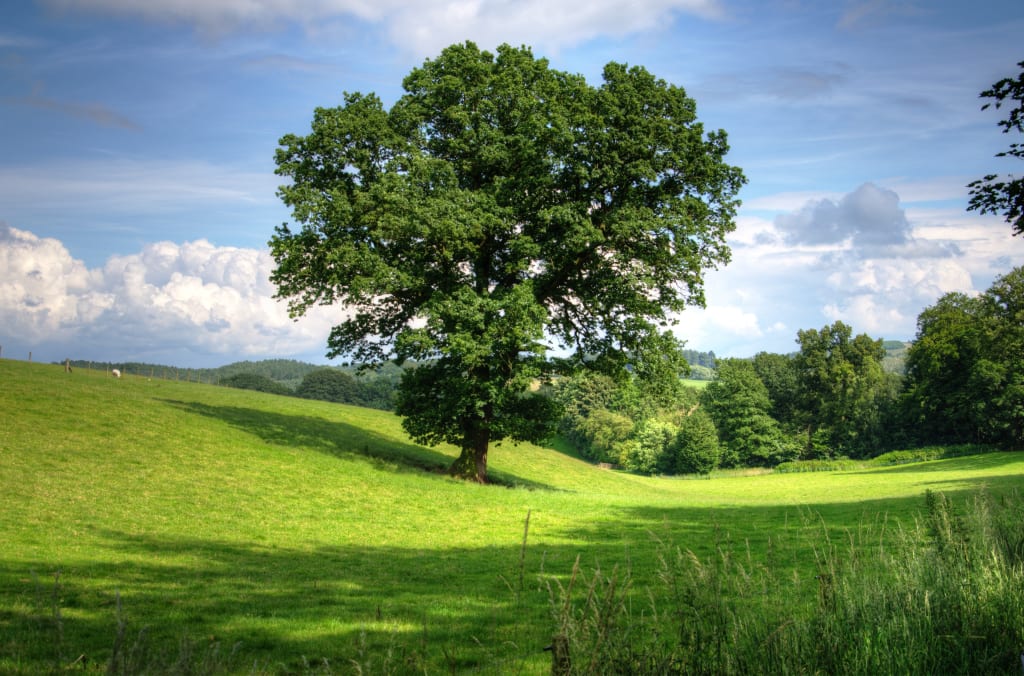
TreeactsRANJANout
Trees are a type of plant that have a single stem or trunk, from which branches and leaves grow. They are found in almost every part of the world, from tropical rainforests to arctic tundras.
Trees play a vital role in our environment, providing oxygen, absorbing carbon dioxide, stabilizing soil, and providing habitats for various animals. They are also a valuable resource for humans, providing wood for construction, fuel, and many other products.
Trees come in many different shapes and sizes, from the towering redwood trees that can reach over 300 feet (91 meters) in height, to the small and delicate bonsai trees that can fit in the palm of your hand. Some of the most common types of trees include oak, maple, pine, spruce, and birch.
Trees are classified as either deciduous or evergreen. Deciduous trees shed their leaves in the fall, while evergreen trees retain their leaves year-round. Some trees, such as the palm tree, do not have traditional leaves but have fronds instead.
Trees can also be used as a symbol of growth, strength, and resilience. Many cultures and religions have their own stories and beliefs associated with trees, and they have been used in art, literature, and music throughout history.New chat
NIRANJAN .R
write of the uses of trees in 450 words
!
Trees are essential components of our natural environment, and they play a crucial role in sustaining life on our planet. Their uses are varied, ranging from providing shelter and shade to providing food and medicine. Trees have been an integral part of human society for thousands of years, and their significance is still recognized today. In this article, we will discuss some of the many uses of trees.
Environmental Benefits
Trees are critical components of the natural environment, and they provide numerous environmental benefits. Perhaps the most significant of these is their ability to absorb carbon dioxide from the atmosphere and store it as carbon. This process helps to mitigate the impacts of climate change by reducing the amount of greenhouse gases in the atmosphere. Trees also help to prevent soil erosion by stabilizing the soil with their roots. Additionally, they provide habitat for a wide range of wildlife and help to maintain biodiversity.
Timber
One of the most obvious uses of trees is as a source of timber. Trees are harvested for their wood, which is used to make a wide range of products, including furniture, paper, and construction materials. The timber industry is a significant contributor to many national economies and provides employment for millions of people worldwide.
Fuel
Trees have been used as a source of fuel for centuries. Wood is burned as fuel for heating and cooking, and charcoal is used for cooking and industrial processes. Trees are also used to produce biofuels, such as ethanol and biodiesel, which are increasingly used as alternatives to fossil fuels.
Food
Trees provide a wide range of food products, including fruits, nuts, and seeds. Many types of fruit trees, such as apple, pear, and peach trees, are grown commercially and provide a significant source of income for farmers. OtherTo many, the word tree evokes images of such ancient, powerful, and majestic structures as oaks and sequoias, the latter being among the most massive and longest-living organisms in the world. Although the majority of Earth’s terrestrial biomass is represented by trees, the fundamental importance of these seemingly ubiquitous plants for the very existence and diversity of life on Earth is perhaps not fully appreciated. The biosphere is dependent on the metabolism, death, and recycling of plants, especially trees. Their vast trunks and root systems store carbon dioxide, move water, and produce oxygen that is released into the atmosphere. The organic matter of the soil develops primarily from decayed leaves, twigs, branches, roots, and fallen trees, all of which recycle nitrogen, carbon, oxygen, and other important nutrients. There are few organisms as important as trees for maintaining Earth’s ecology.
This article discusses the historical, popular, and botanical classifications of trees, their evolution, their importance to humans, and their general structure and patterns of growth. For more information on the three botanical groups that include trees, see fern (e.g., the tree ferns), gymnosperm (including conifers), and angiosperm (the flowering plants). For general information on plants, see plant.
Classification of trees
The ancient Greeks developed a classification about 300 BCE in which plants were grouped according to their general form—that is, as trees, shrubs, undershrubs, and vines. This classification was used for almost 1,000 years. Modern classifications of plants attempt to assign a plant to a particular taxon and establish relationships with other plants based on genetics, cytology, ecology, behaviour, and probable evolutionary lineages, in addition to gross morphology. Popular classifications, however, remain useful tools for studying the common stresses that the environment exerts on all plants and the general patterns of adaptation that are shown no matter how distantly plants are related.





Comments
There are no comments for this story
Be the first to respond and start the conversation.